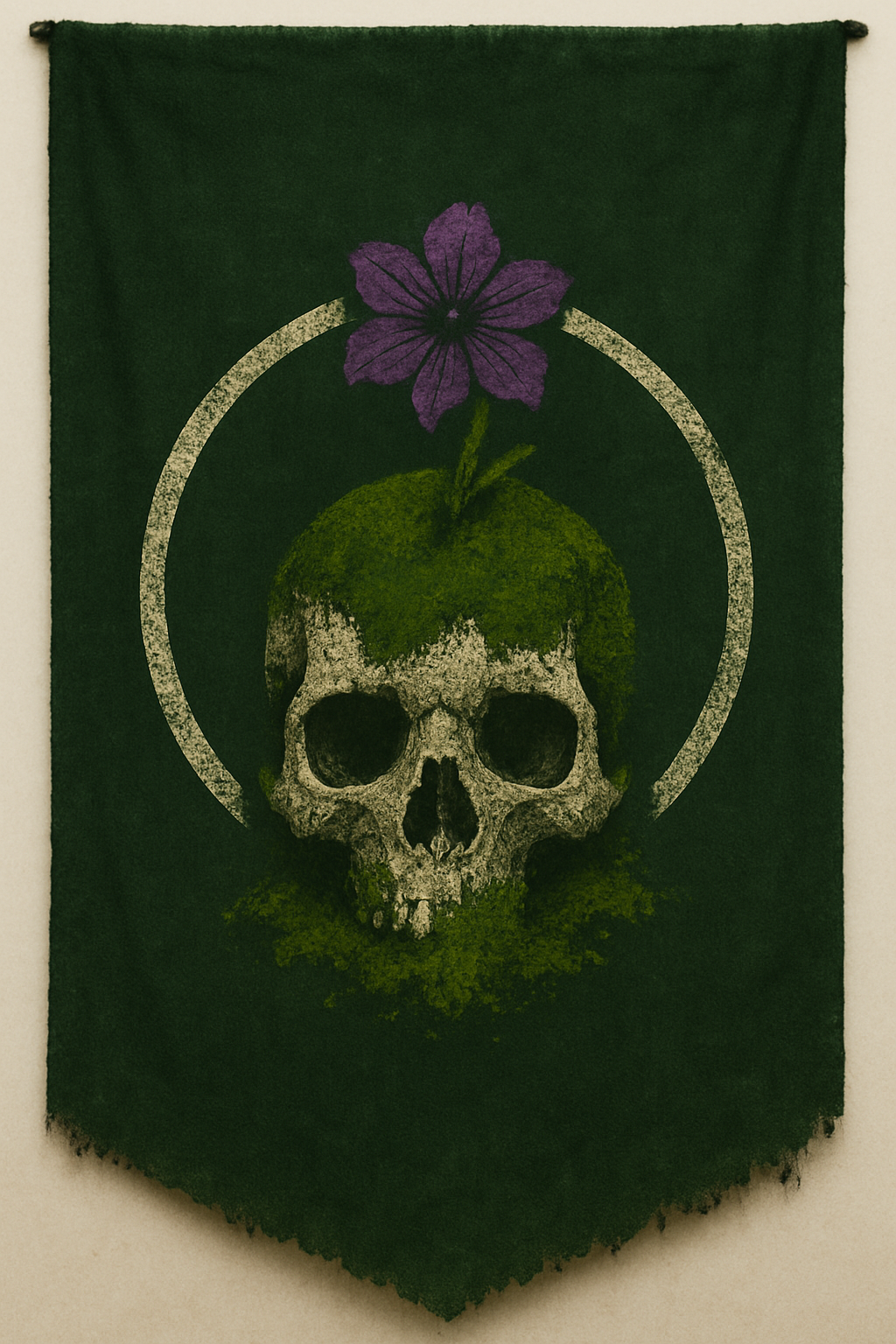The Hollow Grove
History
In the final, frantic years of Haven, as the Serpent’s Sickness carved statues from the living, a few among the desperate sought means beyond divine fire or fruitless hope. Deep in the shadowed wards of Cathenbrook, physicians and mages began experimenting with necrotic incantations to wither the infected flesh before the petrification reached the organs. Risky, painful, and reviled, these methods sometimes bought a patient precious days—long enough, in rare cases, for the crimson tea to arrive.
These early Gravewrights, as they were whispered of, did not worship death—but they did not fear it either. They believed that death, accepted and harnessed, could be a tool rather than a punishment.
As Haven fell and Cathenbrook swelled with the frightened and faithful, these necrotic practitioners faced growing scrutiny. The Arch-Priests of the Dawnbreakers declared their work an affront to Thandros. When the first Blight Seal was discovered etched into a patient's bedpost, the punishment was swift—exile.
But exile was not extinction.
These mages, scholars, and survivors fled deep into Fanewick and found sanctuary within a dying glade. There they discovered the Mycolith, an ancient, primordial necrofungal cluster buried deep beneath the soil. When the exiled Scholomancers settled the glade, the disturbed soil awakened the Mycolith, releasing slow, pulsing waves of necrotic decay. The rot it generates is not uncontrolled—it is selective, purposeful, and wholly opposed to the Witherwild’s unchecked growth. From this fungal heart, a viscous black ichor formed creating the first necrotic well.
To create a new well, a Circle must journey to the First Grove and harvest a mycoshard—a calcified, living spore-cluster taken from the original Mycolith.
Structure and internal Hierarchy
Charnel Chorus
A Hidden governing body of senior Scholomancers.
Scholomancers
Each Scholomancer leads a grove and oversees the Necrotic Reservoir
Adders
Adders appear in larger Groves and often assist their superior Scholomancer as well as aid Blightbinders, they act as a natural progression for the next Scholomancer. They are not mandatory in every grove.
Blightbinders
Blightbinders tend to the blightwards and the blight.
Dirgewrights
A dirgewright plays an integral part of teaching and lorekeeping for future Scholomancers and Blightbinders. Small groves may only have a Scholomancer with no supporting staff, while large groves will have a Scholomancer and potentially many Adders, Blightbinders and Dirgewrights. It is common for Dirgewrights to also travel between groves to aid in teaching people how to aid the grove.
A Hidden governing body of senior Scholomancers.
Scholomancers
Each Scholomancer leads a grove and oversees the Necrotic Reservoir
Adders
Adders appear in larger Groves and often assist their superior Scholomancer as well as aid Blightbinders, they act as a natural progression for the next Scholomancer. They are not mandatory in every grove.
Blightbinders
Blightbinders tend to the blightwards and the blight.
Dirgewrights
A dirgewright plays an integral part of teaching and lorekeeping for future Scholomancers and Blightbinders. Small groves may only have a Scholomancer with no supporting staff, while large groves will have a Scholomancer and potentially many Adders, Blightbinders and Dirgewrights. It is common for Dirgewrights to also travel between groves to aid in teaching people how to aid the grove.
Principles & Practices
Principles of the Hollow Grove
These teachings are passed down orally, etched into bone relics, sung by Dirgewrights, and taught within each Grove’s Circle. 1. Decay is Not Death — It is RebirthWhat rots feeds what grows. The Hollow Grove does not fear death, for it is the soil from which life begins anew. 2. The Cycle Must Complete
Interrupting death, be it through undeath without purpose or flame without wisdom, unbalances the world. 3. Tend the Rot with Reverence
Decay must be guided, not unleashed. The Blight is a tool, not a wrath. Those who wield it must do so with knowledge and discipline. 4. The Witherwild is a Wound
It festers because it has no decay. It grows endlessly because nothing ends. The Blight offers closure. 5. All Belong to the Soil in Time
No bloodline, faith, or flame spares one from returning to the earth. Only how we return defines our legacy.
Daily Practices of the Grove
BonewakeEach dawn, Grovefolk press their palm to a piece of decaying wood, moss or bone — to remind themselves that all will decay to time and pass as it should. Sporespeech
A mid-day practice where fungal spore is burned and inhaled by Blightbinders or Dirgewrights to commune with ancestral echoes or the spirits of decay. Not practiced lightly. Nightward Repose
At sundown, practitioners bury small offerings — food scraps, hair, blood, or petals — into compost mounds around the Grove, feeding the fungi that sustain them and giving an offering to the gods to protect them from the long night ahead. Writings of Rot
Dirgewrights lead sessions where practitioners examine stages of natural decay and fungal life cycles, both for magical training and philosophical insight.
Ceremonies of Passage
The Withering RiteWhen a member chooses to end their life due to age or illness, their body is ritually anointed with fungal salves and buried beneath a young bloom to begin the cycle anew. Often officiated by a Scholomancer. The Seeding
Children born into the Grove are presented to a Blight Seal and given a decay-marked token (bone, seed, or fragment). They are considered part of the Cycle from their first breath. The Grafting
Upon becoming a Blightbinder, initiates graft a mycelial pattern into their skin (magical or symbolic) — a visible mark of their commitment to shepherding decay.
Uniform or Symbols
A member of the grove is often seen wearing mossy green clothing, with accents of dark brown or violet. The crest of The Hollow Grove is a skull with a single withering violet breaking through the bone with the skull sitting on a bed of moss. These banners are often displayed around the walls of Grove settlements or on the crests of shields, armour or official documents.




Comments